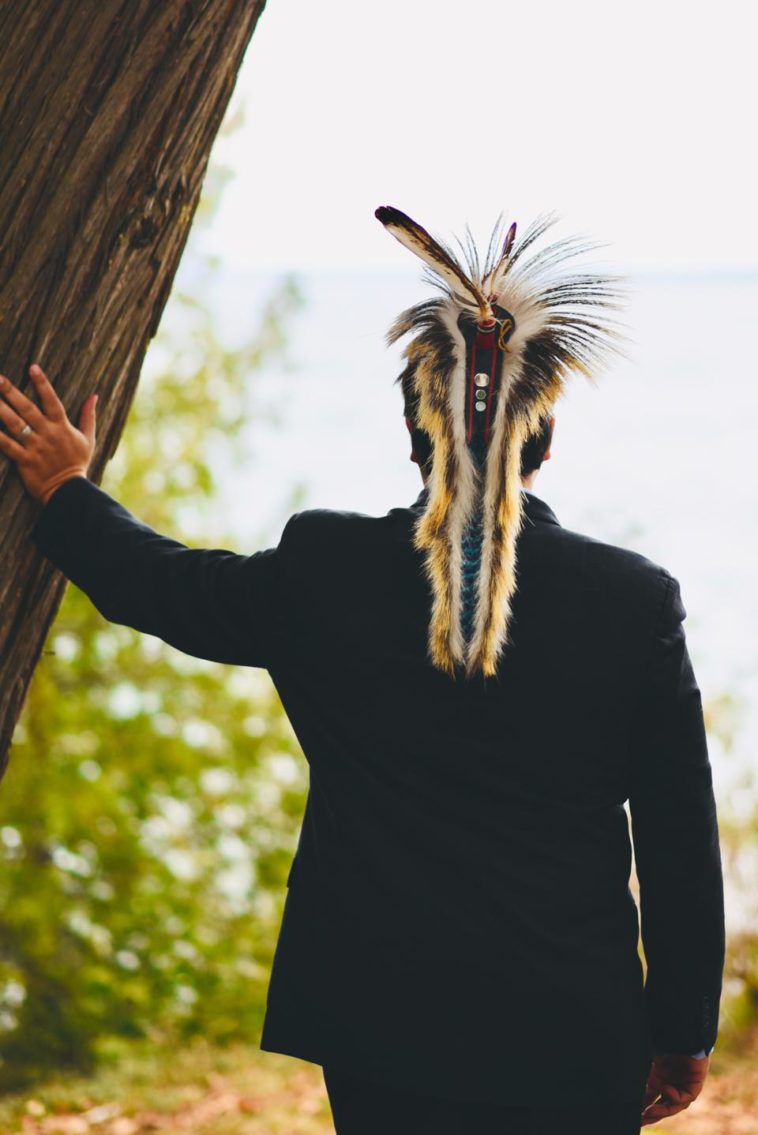Indigenous Food Tourism In Canada Ahead Of Post-Pandemic Trends – Forbes
Food forms a major part of Indigenous cultures, with traditional knowledge and values being passed down from one generation to the next. In 2016, 15,765 people in Canada’s agricultural population identified as Indigenous, representing 2.7 per cent of the agricultural population. But while Indigenous agricultural operators represented 5,160 or 1.9 per cent of the 270,720 agricultural operators in Canada, a small number from a relative standpoint, many have argued that Indigenous values and food systems may provide an overwhelming opportunity, through tourism, to attract and sustain a less carbon-intensive industry, as opposed to one that contributed 8 per cent of all global greenhouse gas emissions— 4.5 billion tons of CO2 per year— before the pandemic.
Trevor Jonas Benson has been working at the interface between the food & drink and tourism industries for the past 15-years. As Vice President of Destination Development at the Culinary Tourism Alliance, where he manages projects that seek to drive meaningful change in the way that people experience food, Trevor sees food and food experiences as a conduit through which to explore cultures.
Benson and his colleagues believe that Indigenous peoples’ food tourism activity may provide an opportunity for both consumers and operators to consider the ethics of tourism in the midst of the pandemic and climate crisis. While wealth and privilege play a vital role in one’s ability to choose leisure travel, tourism-related emissions have the most dire impacts on vulnerable populations and those who struggle with poverty and extreme poverty.
I caught up with Trevor to see how things have been going during this challenging time.
“A picture may be worth a thousand words, but a taste is worth a thousand more, and I am expecting the re-emergence of tourism to be accompanied by a celebration of the diverse foods and foodways that define the places we visit,” says Trevor of the return to leisure-based travel.
“What gives me confidence that we’re going to see this return coupled with a more conscious traveller and good stewardship on the part of destinations, is the fact that the pandemic has renewed our interest in local sustainable food systems. With import-dependent governments concerned about their food supply chains and consumers rediscovering their connection to food as they return to cooking for themselves, we’re actually quite hopeful for a new food tourism to evolve; that is, one that sheds light on the interconnectedness of food, people, places and processes.”
Benson and others are anticipating the growth of Indigenous food tourism in Canada and believe that the relationship between Indigenous Peoples, the land, and its natural resources can teach locals and visitors alike how to be better stewards of lands positioned as destinations.
“Indigenous Peoples were practicing local food long before it was a movement,” says Benson.”
Benson introduces me to Charlie Greg Sark, Epekwitk, Mi’kma’ik, Member of the Lennox Island First Nation, Chef at Big Charlie’s Pizza and Assistant Professor at the School of Climate Change and Adaptation at the University of Prince Edward Island, and Kevin Eshkawkogan, Anishnabek, Member of the M’Chigeeng First Nation and President and CEO of Indigenous Tourism Ontario (ITO) to discuss how Indigenous food tourism can help to unlock a more socially and environmentally responsible post-pandemic travel experiences.

Kevin Eshkawkogan, Anishnabek, Member of the M’Chigeeng First Nation and President and CEO of … [+]
J.CASSON PHOTOS
Daphne Ewing-Chow: What work needs to be done and what questions need to be asked when we look at the intersection between Indigenous foods and foodways, tourism and the environment in a post-pandemic world?
Charlie Greg Sark: Research is expanding to consider the historical- and culturally-based connection that Indigenous Peoples have to food and food systems that may provide them with a more resilient response to climate change events.
The pandemic is an analogue for climate change, and any considerations of resilience measures in the tourism industry need to consider that (net) zero carbon emissions remain the only workable objective for the travel and tourism industry.
Focusing on developing secure food pathways for the purpose of meeting food insecurity threats over economic activity might also introduce an opportunity to consider climate resiliency in tandem with the local and/or Indigenous Peoples food security, sovereignty and resiliency.
A key question in my research is how much risk have we— industry and government— created by continuing to invest resources (human, private capital, government funding) in tourism activity, often in climate risk adverse locations?
Will this invested capital become stranded, as we have seen happen during the current pandemic? And, how would a redirection of these resources into climate change adaptation, mitigation and resiliency infrastructure impact communities that are vulnerable to, and experience increasing climate injustice?
Kevin Eshkawkogan: At the onset of the pandemic, Indigenous Tourism Ontario decided to continue to strategically advance the Indigenous Food tourism sector, and as such, Ontario was the first region in the world to develop an Indigenous Food Tourism Strategy.
What we have found is that Indigenous storytelling provides the answers to many global questions.
As Indigenous People, no one knows these lands better, we are the original tour guides of the lands and have been doing international tourism for hundreds, if not thousands, of years. These are our homelands and we have been sharing them with visitors for centuries, but our stories are not fully being told the way we know them. Indigenous food and foodways are an amazing way to understand not just Indigenous Peoples and cultures, but larger global issues as well.
Indigenous peoples are proudly and confidently finding innovative ways to actively participate on the global stage through tourism. Telling our stories on our terms is critical to fulfilling our vision of improving the socio-economic conditions of Indigenous People through the tourism industry.
Authentic storytelling is also critical to maximizing collaboration and the benefits of tourism for all. We believe the region that can figure out how to best partner with Indigenous groups in a mutually beneficial manner is on the road to becoming the most culturally and economically prosperous region in the world.
Daphne Ewing-Chow: What systems must be put in place to allow Indigenous food tourism to have a meaningful impact on environmental objectives?
Charlie Greg Sark: If Indigenous food tourism is to have a positive impact on facilitating a conversation about current unsustainable tourism activities, there must be a full and transparent conversation about tourism’s contribution to climate injustice.
A shared understanding can and should signal a shift in local, national and international policy thinking towards a (re)writing of tourism emissions regulations that emphasize the re-alignment of governing and accountability processes that aim to reduce GHG emissions.
The sustainability trend has resulted in vastly different and varied definitions of touristic activity as sustainable, despite the fact that tourism activity is almost always part of a carbon intensive pursuit. Without a shared understanding of sustainability, the industry remains biased towards the interest of wealthy western consumers, over the needs of the environment and vulnerable populations.
Kevin Eshkawkogan: Polymorphous definitions and understandings of sustainability are an issue, not just in sustainable tourism, but in Indigenous tourism as well. The collective work of the Indigenous Tourism Ontario 2020-2025 Strategic & COVID-19 Recovery Plan will help restructure and solidify definitions/ understandings of sustainable tourism.
Through ITO’s work to redefine our place in the industry while embracing our core philosophies, we will see Indigenous tourism operators at the forefront of sustainable and regenerative tourism models.

National Aboriginal Day and Indigenous Arts Festival in Toronto celebrating Indigenous culture … [+]
Toronto Star via Getty Images
Daphne Ewing-Chow: What role do you see Indigenous tourism providers and/or communities playing in building a more responsible and resilient tourism in the years to come?
Charlie Greg Sark: The mainstream mass tourism industry model, which is premised on the limitless/ volume growth model of modern capitalism, espouses a number of assumptions that limit tourism’s ability to foster meaningful internal dialogue about tourism emissions and ethics. As a result, tourism advocates have yet to influence industry measurements towards concrete action to eliminate GHG emissions.
The ripples we see in our economic system during the pandemic do present us with an opportunity for change. Our shared understanding of the rights-based agenda in a post-pandemic era may present an opportunity to move the tourism industry’s conversation about sustainability towards climate justice and ecological balance, instead of social injustice and economic gain. To do so, tourism must switch from an activity that is the domain of the privileged through voluntary travel, and focus on the climate and social justice rights of peoples in a destination.
While Indigenous Peoples’ tourism has emerged as a possible departure from the current (un)sustainable trajectory of mass tourism in general, the Indigenous sector as a whole must also depart from dominant tourism narratives related to sustainability.
Indigenous Peoples are identified as a vulnerable population to climate change, and therefore are more linked to issues of climate rights, ethics and justice. The opportunity for Indigenous Peoples and their allies who are involved in climate justice issues is to encourage Indigenous Peoples’ leadership and governments to become more involved in regulation.
Defining sustainability with both western science and Indigenous knowledge systems, the Two-Eyed Seeing approach developed by Elder Albert Marshall (Mi’kmaq) represents an opportunity to redesign an industry that is ethical from a social and environmental perspective.
Indigenous Peoples’ involvement in tourism has presented an opportunity to have this discussion in Canada, doing so in a wealthy nation with travelers who have the ability to choose travel.
In short, the idea of sustainability to a tourism product or service in Canada is quite common, especially in its application by Indigenous Tourism operators and marketing agencies. However, this application is not sincere and thus necessitates a new approach to evaluate whether these touristic activities do not actually contribute to environmental and/or social degradation.
The majority of Indigenous Peoples in the world are defined as vulnerable, and at an increased risk to the impacts caused by climate change. Focusing on the rights of these people over the rights of the tourism industry may address the irony that tourism activity is being used as a “economic development” model in vulnerable and poor communities, while the related tourism activity results in GHG emissions that contribute to global warming, thereby increasing that same communities’ vulnerability to climate change.
Kevin Eshkawkogan: Through our historic and traditional foods and foodways, it is well documented that Indigenous Peoples have contributed tremendously to other cultures and the tourism industry. We will continue to do so for centuries to come.
Indigenous tourism providers and/ or communities will be at the heart of building a more responsible and resilient tourism in the future. Their innate position and connection with the earth has them ideally positioned them to lead this critical work.
Local foods and foodways, alongside Indigenous values are so important to supporting responsible and resilient tourism models.
As is evidenced with the 2020 global pandemic and the various travel restrictions, we have quickly found many people are having to embrace hyper local foods.
The simple Indigenous philosophy that Mother Earth will provide all that you need, has never been truer.
Published at Sun, 31 Jan 2021 22:44:05 +0000






Comments
Loading…